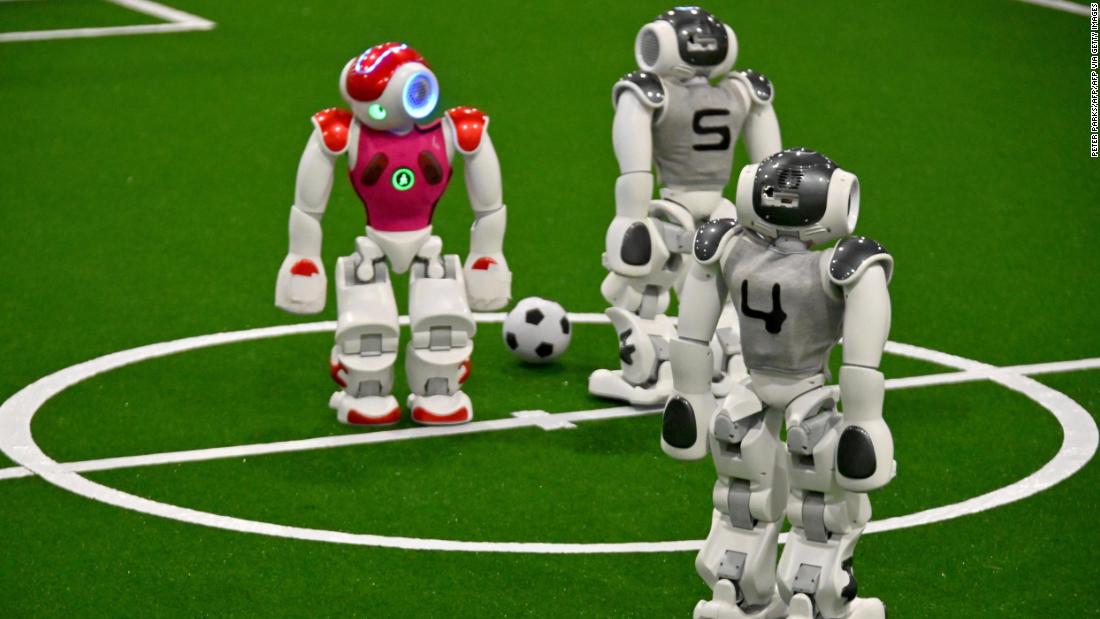From robot soccer to speedgate, these sports of the future already exist
Thanks to artificial intelligence, robotics and other technological innovations, new high-tech sports are kicking off around the world. From robots taking the field to play soccer, to pilot-controlled drones racing one another, like humans, machines are proving to have their own competitive streak.
AI can now even create new sports, from the strategy and rules of the game to the layout of the playing field.
These high-tech sports may sound like they come from the future, but they already exist. Here are some of the most ground-breaking.
In drone soccer, teams of between three and five pilots score points by flying their “striker” drone through their opponent’s goal, while the opposition drones try to block them. It features three three-minute sets of intense gameplay in which players must weigh how aggressively they fly with the risk of damage to the drone.
Robot Soccer
The Robot World Cup Initiative — “RoboCup” for short — is a soccer competition for autonomous robots. It has several leagues, in which robots of different sizes must make independent decisions while communicating effectively with their teammates.
RoboCup’s ultimate goal is that by 2050, “a team of fully autonomous humanoid robot soccer players shall win a soccer game, complying with the official rules of FIFA, against the winner of the most recent World Cup.”
Drone Racing
In first-person view drone racing, pilots direct drones through complex racecourses while wearing goggles that stream live video from the drone’s camera, so the pilots feel like they are flying inside them.
Elite pilots participate in the global professional Drone Racing League (DRL), which has been televised by major networks, with its custom-built racing drones traveling at 90 miles (145 kilometers) per hour.
Drone racing is believed to have started in Australia around 2010, when pilots would attach cameras to their drones and race them through parks and backyards, according to DRL CEO and founder Nicholas Horbaczewski. DRL has since helped bring the sport into the mainstream. Six years after the official launch of the league in 2016, the sport now has 75 million active global fans, says Horbaczewski.
Speedgate
“Deep learning algorithms” were used to create ideas for every aspect of the game, from the gameplay and rules to the logo, according to AKQA, the design agency behind Speedgate. The team trained a neural network using rules from roughly 400 sports. More than 1,000 results were produced — some were “downright dangerous,” according to AKQA, such as an exploding disc relay in which disc-type objects that explode on impact are thrown at the players. Others were just “hilariously implausible,” such as “hot air balloon tightrope racket” in which a team is suspended on a tightrope between two hot air balloons, hitting an object with rackets.
Speedgate has been officially recognized by the Oregon Sports Authority and is now growing into a US-wide university league, says AKQA.
Segway polo
Segway polo is a team sport in which players on two-wheeled, self-balancing electric vehicles try to score by hitting a ball past the goal line with their mallet.
For all the latest Sports News Click Here

